Darkcore
byThe second half of 1992 saw a major split within the hardcore movement. Many DJs who used to be idealistic about hardcore got disappointed and started to work with other styles mostly opting for such newly revived genres as house, techno and US garage. Some threw their efforts into jungle. Upset, exhausted and angry, they created a new style that stole the spotlight from happy hardcore’s positive tunes. Darkcore got big over a very short period of time and became the key subgenre of up-and-coming jungle and hardcore that was getting too commercial and left little space for expressing creativity.
Darkness is in the heart of darkcore. It came up as an opposition to happy hardcore. Overall dark feel of the tracks, sinister rhythm patterns and crackling sounds, separate phrases turning up in unexpected moments, outcries, pleas for help and sounds taken from horror movies—this is what darkcore is built upon. Trying to make the atmosphere of helplessness and insanity more apparent, musicians gave their tracks expressive, meaningful names. What gave darkcore an additional appeal was the drug theme. It was already all over hardcore, yet the hardcore fans used substances in order to enhance the feeling of joy and free their spirits, whilst the creators of darkcore revealed the other side of the drug abuse. In terms of sound darkcore tracks reflect the state of constant ecstasy, marijuana and amphetamine abuse with all side effects related to it: depression, paranoia, personality disorders, hallucinations and shivers running up and down the spine caused by all kinds of weird sensations.

DJ Hype — Weird energy (Hells bells mix) 1993
From Shot in the dark single, Suburban Base Records
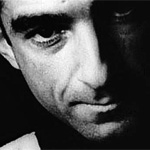
DJ Hype
Kevin Ford’s opus falls into the type of pieces inspired by a slightly different idea also common for darkcore where a drug is regarded as a source of mysterious malign power, a sort of desire field overflowing with negative energy, as a trap a raver ends up in once he takes one or two pills of synthetic joy.
Darkcore is not only able to terrify the listener with the reflection of drug trip sensations, it can also give a taste of the stage of complete indifference a junkie may go through. The track Valley of shadows illustrated this phenomenon with a fragment from a BBC film devoted to near-death experiences: “Felt that I was in a long dark tunnel.”

Pascal & Sponge — Nosebleed (Right nostrill) 1993
From Nosebleed single, Face Records
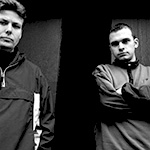
Origin Unknown:
Ant Miles, Andy C
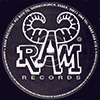
Origin Unknown — Valley of the shadows 1993
From The touch / Valley of the shadows single, RAM Records

Invisible Man — The beginning 1993
From The beginning / The end single, Timeless Recordings
Goldie. We might as well iconize him. I suppose, nobody embodies

Kemistry
In 1991 Goldie came back to London from New York and, visiting a bookstore, accidentally run into Kemistry—a young DJ girl who converted him and introduced him to the similarly young jungle community of the Rage club where Fabio and Grooverider played their sets. Clifford fell in love with the new style and spent hours in the studio working as a sound producer on a newly founded Reinforced label. In the end of 1992, after releasing a few quite successful records he made an EP named Terminator with the help of his fellow thinkers. Tracks featured on the album set the tone for the rest of jungle music and gave birth to darkcore. Let us see what Goldie himself had to say about the new subgenre: “Dark’ came from the feeling of breakdown in society. It was winter, clubs were closing, the country was in decline. As an artist, I had to reflect it. But now all these kids have turned it into joke, they think dark is about devil worship.”

Metalheads — Sinister 1992
From Terminator EP, Synthetic
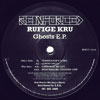
Rufige Kru — Ghosts of my life 1993
From Ghosts EP, Reinforced Records
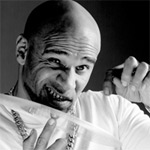
Goldie
Sinister is an excellent example of darkcore that sounds even more interesting than Terminator, the title track of the album. The latter is undoubtedly in all aspects yet it sounds a little too mechanistic whereas Sinister is the epitome of evil from a master who looks like evil personified, charismatic as he is. You can hear space rock musicians’ guitar riffs, vocal samples that sound as sentences (“you will die”) and feel the atmosphere of an uncompromising force taking you for a whirling ride. The name of the track sends an obvious message, too.
1992 and 1993 saw the rise of Reinforced Records with the label releasing vinyl records made by the pioneers of darkcore. Founded in 1989 by the members of 4hero act, the label attracted a loyal crowd of fans and imitators. Metallic sounding basses, roaring bassline, carefully hidden voices—all these components which became examples for other musicians were designed in the north of London in the label’s own studio. “I remember one session which lasted over three days.”, Goldie recalls, “We’re sampling from ourselves, and resampling, twisting sounds around and pushing them into all sorts of places.” These sessions resulted in fifteen more digital audio tapes that featured the dark sound textures and mind blowing samples later used by the musicians of the label.
In the end of 1992 Doc Scott released a darkcore track named Here come the drumz which became an absolute hit. The high-strung feeling in the very beginning of the track gives the listener a slight ray of hope yet once you hear the yell Here come the drumz, the barrier falls off and the balance is constantly disturbed by the roaring drums. The insane rhythm is complimented by unstable and grainy atmosphere which makes the listener abandon any hope for an optimistic outcome. Gliding synth passages infuse the overall feeling created by the track.
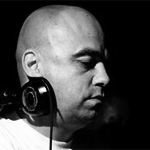
Doc Scott
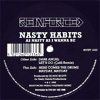
Nasty Habits — Here come the drumz 1992
From As nasty as I wanna be EP, Reinforced Records
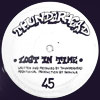
Thunderhead — Lost in time 1993
From Lost in time single, Thunderhead
4hero
Mr. Kirk Nightmare
1990
It is worth mentioning that there is a background to the drug theme of darkcore. Back in 1990 when 4hero used to be a four-piece band, they released a gloomy breakbeat single Mr. Kirk that would later be released several more times. The storyline of the track depicted the actual state of affairs rather accurately: the policemen came to a father and inform him of his young teenage son’s death at a night caused by drug overdose. A year and a half later the Kaotic Chemistry trio released a hardcore EP named Five in the one night. The album’s cover features a line of heroin and a credit card. The title of the album sends a message, actually referring to repeated use of the pills during the course of a night which happens because the effect fades away quickly. 1992 saw the release of an album LSD obviously based on the same concept. The tracks’ titles sounded quite transparent for those in the know. Space cakes, for one, mean the notorious cakes with hashish or marijuana while Illegal subs is a slang term for illegal substances, drugs, to put it simple. The remix EP features a track named Vitamin K devoted to a hard drug ketamine that induces strong hallucinations. (Similarly to this shortening, the word ecstasy was reduced to E).
Generally, the darkcore creators engaged in depicting if not laying bare the everlasting hangover state of the early 90s night life.
Remarc & Lewy
Ricky
1994
The cinematic theme of darkcore paralleled the drug theme. Young musicians were inspired by black-and-white horror movies, recorded the sound of wind howling around the gravestones, put the rustling sound of the leaves on multiple reverb, cut out girls’ cries from the most thrilling scenes, put emphasis on the phrases related to the underworld. They engaged in designing musical horrors. There was a short period of time in the story of darkcore when there was a trend for making tracks using the voices of the gripped by fear movie characters who yelled out loud pet forms of other characters’ names. Remarc was among the ones who popularized this trend by releasing Ricky filled with otherworldly tunes. There were also Johnny by Johnny Jungle and Scottie by Subnation who used a meaningful phrase “I don’t wanna die” with someone responding to the character of the song: “We not gonna die, we’re gonna get out of there”.

Johnny Jungle — Johnny 1993
From Johnny / I like to cry single, Face Records
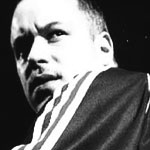
1/2 of Johnny Jungle:
Pascal Redpath
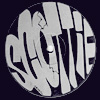
Subnation — Scottie 1993
From Scottie / Somebody always dies single, Future Vinyl
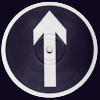
Ed Rush — Bludclot artattack 1993
From Bludclot artattack single, No U Turn

Ed Rush
There is one more classic example of darkcore and it is a track made by young Ed Rush named Bludclot artattack. Ed released this record on the
(A witness recalls: “I was a raver from time, but from mid to late ‘92 I started listening to hardcore with dub and ragga samples, like Terminator. I always thought those dark tracks were wicked. The ‘happy’ tunes were good, but the dark ones really got you. I checked By Any Means Necessary at Brixton Academy at the end of ‘92. I remember the DJs were Grooverider, Frost and Mickey Finn. The whole night was dark. I remember dancing at the front, looking ‘round and noticing there wasn’t a smile amongst the people. Not one smile. But everyone was into it. It wasn’t a bad vibe. I remember being off my head and thinking that I must remember this. This is different now. It’s still good but it was different. It was serious now like a militant army. People were concentrating, no waving hands in the air. They were seriously concentrating. I don’t know if it was billed as a Jungle rave—but it was.”)
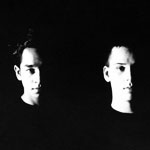
Boogie Times Tribe
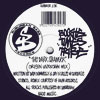
Boogie Times Tribe — The dark stranger (Origin Unknown remix) 1993
Remixed by Andrew John Clarke, Ant Miles
From The dark stranger / Real hardcore (Remixes) single, Suburban Base Records
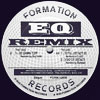
EQ — So damn tuff (Ray Keith remix) 1993
Remixed by Ahmud Dookhiths
From Remixes EP, Formation Records
For a certain period of time darkcore, frequently spelled as dark’, was called dark hardcore (similarly to the way jungle was called hardcore jungle and jungle techno and lots of other names). At the early days of darkcore its sound did correlate to the sound of hard which can be heard on the Hard leaders III: Enter the darkside compilation. The album featured proper darkcore and dark hardcore tracks as well as music that combined components of both of these genres and was called proto-jungle. Yet as these styles were evolving, they sounded less and less like their predecessor. At the same time a new term of ‘darkside’ came into common use (sometimes spelled separately as dark side). Once invented, the term ‘darkside’ was used as a synonym for ‘darkcore’ yet
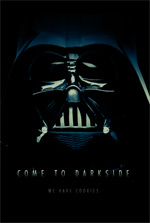
Thematical poster “Come to dark side. We have cookies.”
Darkside can be also called the opposite side of intelligent which is a general name for all subgenres of
Autumn of 1993 saw the decline of darkcore. 4hero, the masterminds and owners of Reinforced Records moved on to the music celebrating the forces of light. Goldie, the charismatic leader of the darkcore movement blamed derivative musicians from other labels for the genre’s stagnation (remember what he said about children) and eventually got to making music that combined the components of darkcore and artcore. Yet darkcore did not vanish completely, it did not dissolve as a genre and it is still notable. Despite its history ending by late 1994, it paved the way for lots of experiments, expanded its own horizons and gave the food for thought to the future inventors of other subgenres. By the time jungle was divided into two branches, darkcore prepared itself a future in darkstep that acquired some of its effects and the practice of using samples from horror movies. Its next incarnation was, in fact, a new style which was given a sonorous name of
Music & stories
12″ pages on social networks and weekly materials that you can’t find on the website. Cool electronic music videos, tune of the week, histories behind albums and FridayFive tracks. Join!